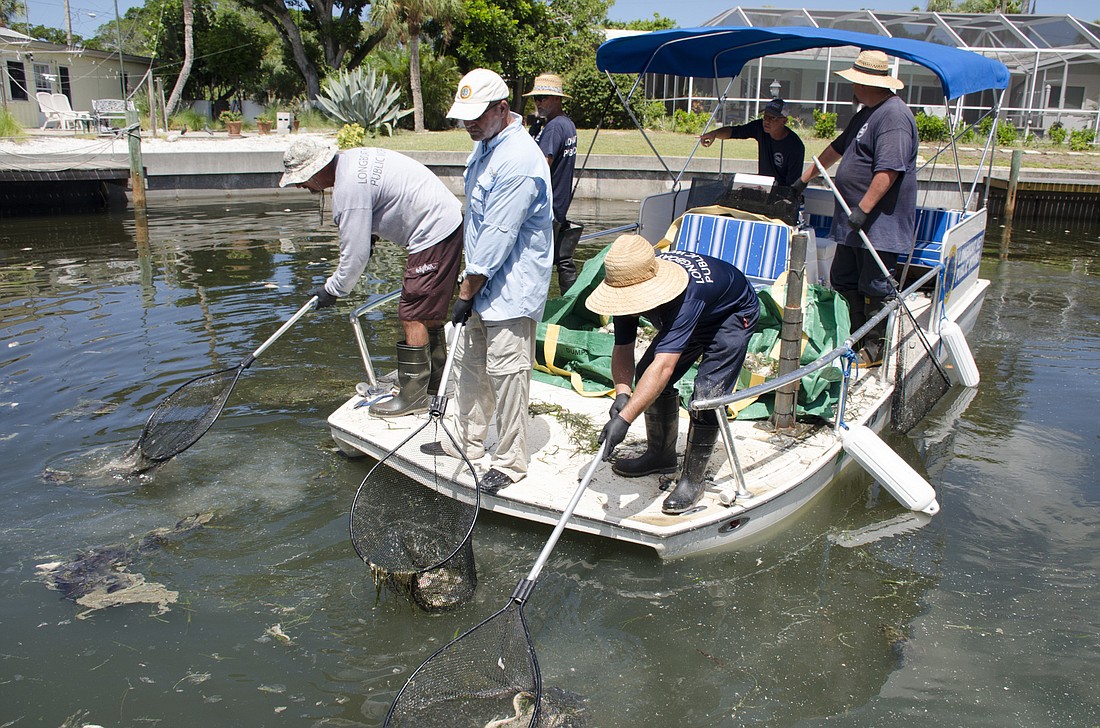- April 4, 2025
-
-
Loading

In a report prepared to close out Longboat Key’s response to 2018’s red tide bloom, Public Works Director Isaac Brownman wrote the town spent $59,517 on beach and canal cleanup while receiving to date just under $4,000 in state reimbursement.
In a town workshop on Tuesday, though, Brownman told town commissioners that a lot of what the town spent was already budgeted as part of normal business.
The town gathered a total of 186,660 pounds for disposal in 1,058 staff hours. The first sign of dead sea life in Longboat Key was found on Aug 2.
“We don’t have a dedicated red tide team that activates when there’s a fish kill,’’ he said, adding the town uses its normal public works staff when needed.
“That’s why we are very judicious.’’
Among the crews handling cleanup in the first days of the event were town department heads.
“It was on my bucket list, and I got to check that off,’’ Town Manager Tom Harmer joked.
Generally speaking, the town considers it its responsibility to clear the entirety of the gulf beach and a selection of bayside canals that include those with access to public streets, something that is not typical of other communities in Southwest Florida. The town avoids commercial marinas and private boat basins and big open water.
“We cannot clear Sarasota Bay of dead sea life,’’ Brownman said.
In years past, the town spent as much as $327,000 on contractor costs in red tide clearing operations.
Brownman’s report indicates in-house work saved the town more than $35,000, based on the cost of Sarasota County contracts obtained in 2018.
The town did contract for a beach raker machine to help smooth the sand after cleanup crews had passed through.
To date, the town received $3,838.53 in reimbursement from the Florida Department of Environmental Protection for these sorts of expenses:
Brownman said most of the town’s reimbursement came in the form of worker overtime.
“The challenge with this bloom was the longevity of it,” he said.